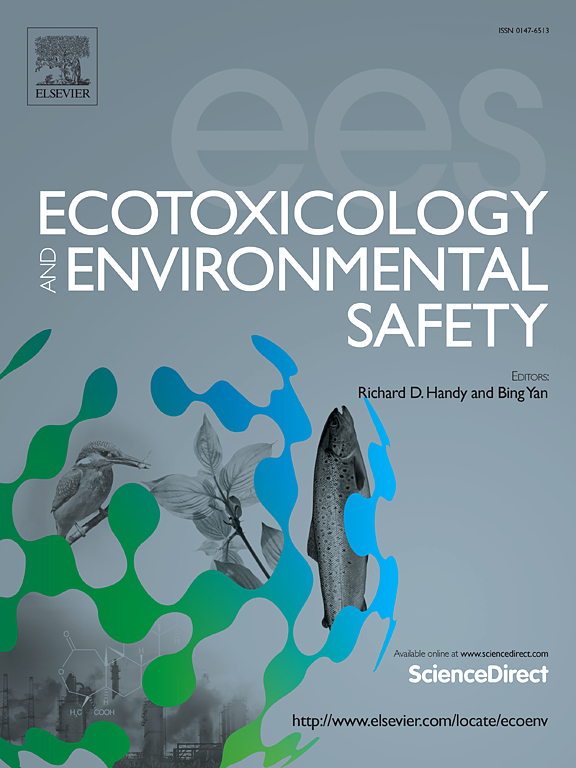Morphological, histopathological and brain transcriptomic assessment reveal reproductive toxicity and neurotoxicity in western mosquitofish (Gambusia affinis) exposed to levonorgestrel
IF 6.2
2区 环境科学与生态学
Q1 ENVIRONMENTAL SCIENCES
引用次数: 0
Abstract
In recent years, more and more progestogens have been detected in the environment, especially levonorgestrel (LNG), which is widely used in medicine and veterinary medicine, but its potential effects on the reproductive and nervous systems of fish are not fully understood. The purpose of this study was to investigate the reproductive and neurological effects of LNG on female western mosquitofish (Gambusia affinis). Through a 30-day exposure experiment, we evaluated the morphological data, gonadal and brain histopathology, and brain transcriptome of mosquitofish under different concentrations of LNG (0, 5, 50, 500 ng/L). The results revealed that exposure to LNG led to a significant reduction in the body weight and condition factor of female fish, with the most pronounced decrease observed at a concentration of 500 ng/L. Morphological observations indicated that LNG exposure led to an increase in the 4th/6th anal fin ratio at concentrations of 50 and 500 ng/L. Additionally, histopathological analysis demonstrated pathological alterations, including ovarian degeneration induced by LNG, as well as vasodilation, congestion, and the enlargement of intercellular spaces in brain tissue. Analysis of brain tissue transcriptome data identified numerous differentially expressed genes related to cerebral vascular formation, nerve injury, and neuroendocrine regulation following LNG exposure. In summary, LNG has significant reproductive and neurotoxic effects on female mosquitofish, and these findings provide important data for further research on environmental risk assessment and aquatic toxicology of LNG.
求助全文
约1分钟内获得全文
求助全文
来源期刊
CiteScore
12.10
自引率
5.90%
发文量
1234
审稿时长
88 days
期刊介绍:
Ecotoxicology and Environmental Safety is a multi-disciplinary journal that focuses on understanding the exposure and effects of environmental contamination on organisms including human health. The scope of the journal covers three main themes. The topics within these themes, indicated below, include (but are not limited to) the following: Ecotoxicology、Environmental Chemistry、Environmental Safety etc.

 求助内容:
求助内容: 应助结果提醒方式:
应助结果提醒方式:


